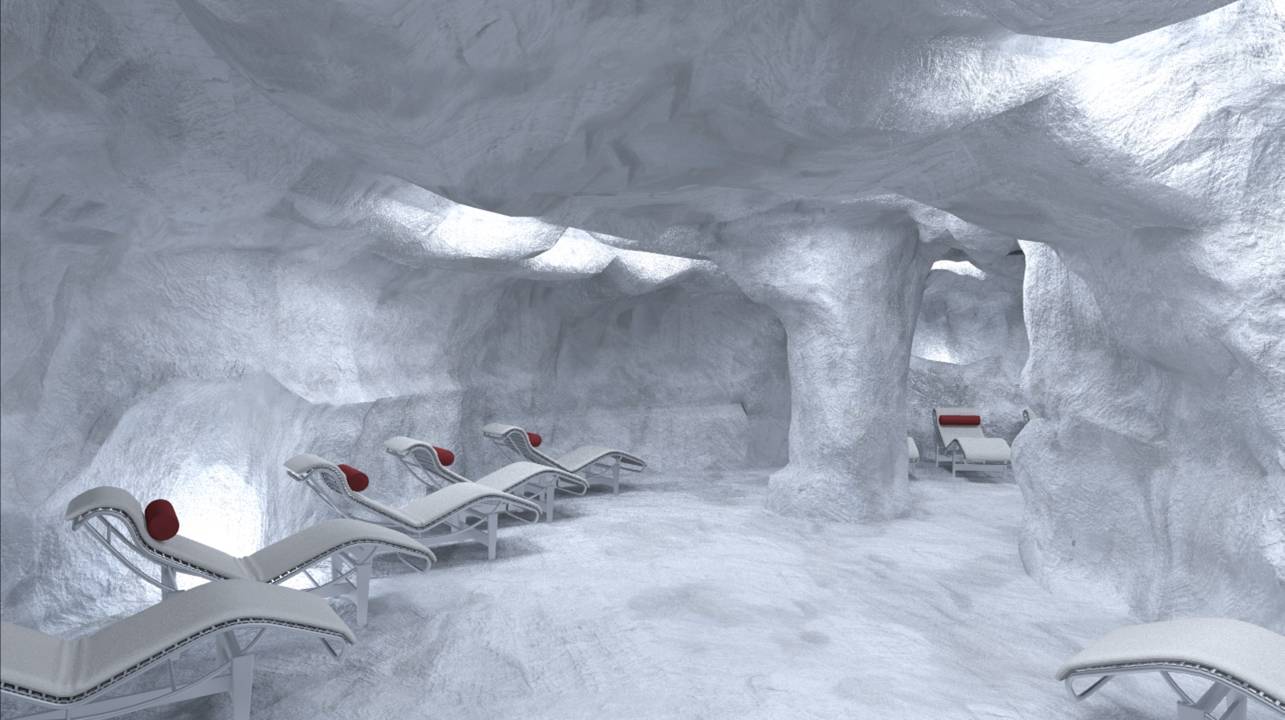
Driven by increasing consumer awareness about the health benefits of salt therapy and the rising trend towards holistic well-being and natural approaches to health and wellness, salt room therapy is being incorporated into wellness and fitness facilities across the country. In this post, we explore what salt therapy is, its benefits and why it’s fast gaining recognition in the contemporary wellness landscape.
What is Salt Therapy?
Salt therapy, also known as halotherapy, involves breathing in air with microscopic salt particles in a controlled environment.
It is a natural non-invasive therapy used to treat respiratory and skin conditions by harnessing the natural antibacterial and anti-inflammatory benefits of salt.
Its origins are deep-rooted in ancient healing practices and can be traced back to Eastern European and Central Asian cultures. But it began to gain scientific attention in the mid-19th century when Polish physician, Dr Felix Boczkowski, discovered that men working in nearby salt mines suffered fewer respiratory problems than the general population. This observation sparked interest in the potential therapeutic effects of salt.
Types of Salt Therapy
Salt therapy can be administered through dry or wet methods. The difference is based on the way salt is used.
Dry Salt Therapy
Dry Salt therapy, also classified as halotherapy or speleotherapy, involves small salt particles dispersed in a dry moisture-free and humidity-free atmosphere.
According to the Salt Therapy Association, speleotherapy is a therapy that utilises the climate conditions and salt air specific to natural occurring caves, underground salt caves and salt mines. Whereas, Halotherapy uses an artificial environment and modern technology to reproduce the therapeutic conditions found in natural salt caves.
Wet Salt Therapy
Wet salt therapy encompasses saline solutions and saltwater baths, enabling our bodies to soak up the benefits. This includes either gargling water that is rich in salt or ingesting a small amount of salt mixed with water, or more typically, bathing in a large volume of salt-rich water.
Saline solution can also be used to rinse the nasal passages, clearing out mucus, allergens, and pathogens (treating conditions such as allergic rhinitis and sinusitis) or inhaled deeply into the lungs using a nebuliser which converts saline solution into a fine mist (commonly used for treating asthma, COPD, and cystic fibrosis).
Floatation tanks or float pods are one of the more common examples of wet salt therapy. Suspended in a warm saltwater solution may support relaxation, improve sleep, and decrease stress, anxiety, and pain.
What is a Salt Therapy Room?
A salt therapy room can be defined as a controlled environment that aims to mimic the microclimate of natural salt cave making use of salt’s natural anti-inflammatory, antibacterial and astringent properties.
Types of Salt Rooms
Salt rooms come in two forms: active and passive.
Active Salt Rooms
Active salt rooms such as Halotherapy Rooms provide a controlled way of dispersing salt into the air within the enclosed space using a halogenerator (or salt generator) which crushes and grinds the salt into tasteless microscopic particles to be inhaled and exposed to the skin.
Passive Salt Rooms
Passive salt rooms are climate-controlled rooms created to imitate the conditions found in natural salt caves and salt mines. They are designed to contain large volumes of various types of salt décor such as Dead Sea salt, Himalayan salt, Rock salt or other salts lining the walls, ceilings and floors. However, while they can be built to look like a natural salt cave environment, passive salt rooms do not use a halotherapy equipment and are used primarily for relaxation and meditation. Passive salt rooms include salt caves, salt rooms and Himalayan salt saunas.


What are the Benefits of Salt Room Therapy?
Salt therapy has been shown to benefit many chronic respiratory and skin conditions as users breathe in the salt-infused air.
Among other things, salt therapy alleviates a range of respiratory conditions such as asthma, bronchitis, cystic fibrosis, sinusitis and seasonal allergies, cleansing the lungs of bacteria, irritants, and pollution and reducing inflammation of the respiratory tract.
It also improves circulation and enhances lung capacity and oxygen intake, making it a favourite with sports enthusiasts and athletes looking to complement sports performance and stamina.
Additionally, it helps soothe skin conditions such as eczema, psoriasis and dermatitis removing impurities from the skin.
Embracing Salt Room Therapy in Spa and Wellness Design
Topline Pools and Wellness are accomplished in the design, construction and installation of salt rooms.
Our bespoke-built salt rooms, halotherapy rooms and salt caves make an ideal addition to any commercial spa or wellness retreat looking to provide this holistic wellness approach.
Whether you’re looking to add a salt room to your facility or building a new project from the ground up, we can provide expert advice, guidance and insight on the best possible design, build options and the salt décor and equipment required to ensure your salt room perfectly fits your space and provides a soothing and tranquil environment for your guests.






